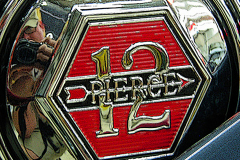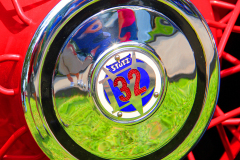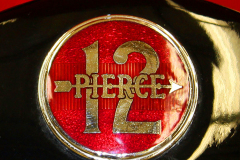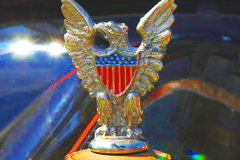Stutz | Pierce | Plymouth
Pierce-Arrow Motor Car Company was an American automobile manufacturer which was active from 1901 to 1938. Although best known for its expensive luxury cars, Pierce-Arrow also manufactured commercial trucks, fire trucks, camp trailers, motorcycles, and bicycles.
In 1904, Pierce introduced a larger, more luxurious car for the upscale market, the Great Arrow. This became Pierce’s most successful product. The solidly built, four-cylinder car won the Glidden Trophy in 1905, an endurance run to celebrate the most reliable car.
In 1909 US President William Howard Taft ordered two Pierce-Arrows (and two White Model M Tourers) to be used for state occasions, the first official cars of the White House.
The Pierce-Arrow was a status symbol, owned by many Hollywood stars and tycoons. Most of the royalty of the world had at least one Pierce-Arrow in its collection.
From 1928 to 1933 Pierce-Arrow was owned by the Studebaker Corporation.
Pierce was the only luxury brand that did not field a lower-priced car to provide cash flow, and without sales or funds for development, the company closed its doors in 1938.
Its final model was the Silver Arrow introduced in 1933.
Plymouth was a brand of automobiles produced by the Chrysler Corporation, designed to compete in the “low-priced” market segment dominated by Ford and Chevrolet.
In 1928, the first car produced was a redesigned four-cylinder Chrysler 52 model, sold as a Chrysler-Plymouth Model Q. The “Chrysler” portion of the nameplate was dropped with the introduction of the Plymouth Model U in 1929.
Plymouth, Chevrolet and Ford, were commonly referred to as the “low-priced three”.
Beginning in 1930, Plymouths were sold by all three Chrysler divisions (Chrysler, DeSoto, and Dodge).
In 1931 with the Plymouth Model PA, the company introduced floating power and boasted, “The smoothness of an eight – the economy of a four”. The 1939 Plymouth Convertible Coupe was advertised as the first mass-production convertible with a power folding top.
The Plymouth logo featured a rear view of the ship Mayflower which landed at Plymouth Rock in Plymouth, Massachusetts. However, the inspiration for the brand name came from Plymouth binder twine, due to the popularity of the twine among farmers.
During the Great Depression, the Plymouth division helped significantly in the survival of Chrysler when many other car companies failed. Plymouth sales were a bright spot during this dismal period, and by 1931 Plymouth rose to number three in sales among all US cars.
Plymouth continued to be a high-volume seller for Chrysler until the late 1990s. The brand was withdrawn from the marketplace in 2001. The Plymouth models that were produced up to then were either discontinued or rebranded as Chrysler or Dodge.
Some memorable models include the Fury, Roadrunner, Prowler, Duster, GTX, Barracuda, and Superbird.
The Stutz Motor Car Company of America, Inc., had its origins in the Ideal Motor Car Company, formed in 1911 by Harry C. Stutz and Henry F Campbell.
Their first car was the 1911 Stutz Bearcat racecar followed by a production model in 1914.
Throughout its history, Stutz was known as a producer of fast cars (America’s first sports car) and from 1924, luxury cars for the rich and famous.
Other memorable models were the Stutz Vertical Eight, (with hydraulic brakes and safety glass, earning it the name ‘Safety Stutz’), the Stutz Blackhawk and the Stutz Series M Coupe.
In 1927, a Stutz set a world record for speed, averaging 68 mph for 24 hours. In 1928 Stutz set another speed record at Daytona Beach, reaching 106.53 mph, making it the fastest production car in America.
A victim of the Great Depression, Stutz production ended in 1935.
The Stutz Motor Car of America, established in 1968, had some reasonable success selling newly designed Blackhawks, Bearcats, Royale Limousines, IV Portes, and Victorias.
These incarnations of Stutz were lavishly furnished and used General Motors running gear, featuring perimeter-type chassis frames, automatic transmission, power steering and power brakes with discs at the front.
Elvis Presley bought the first Blackhawk in 1971, and later purchased a further three. Frank Sinatra, Lucille Ball, Dean Martin, Evel Knievel, Barry White and Sammy Davis, Jr. owned Stutz cars.
At that time, Stutz was touted as the World’s Most Expensive Car.
Sales of Stutz began to wane in 1985 and continued to do so on, until its demise in 1995.




